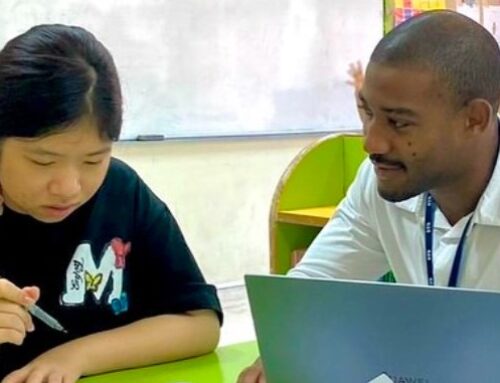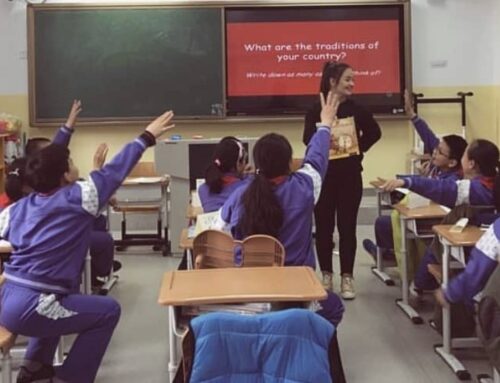By Ken, Teacher in Warsaw
Hello everyone, and welcome to today’s class!
Today we’ll be learning about basic teaching methods that I use on a daily basis. Maybe you’ve just started your teaching journey, or maybe you’re thinking about teaching and are curious as to how an effective lesson is taught. English is difficult at the best of times, ranging from tenses to phrasal verbs and everything in-between so we of course want to make our lessons as interactive and as interesting as possible. And one of the easiest ways to do this is to….
 Paint a picture
Paint a picture
Yes, I realize we’re not in art class! However this is a really good way to make things easier to understand. So what do I mean?
We describe a situation to a student to make it more real and to enhance their understanding. The following is an excerpt from a lesson about airports and traveling.
T: So we’re at the airport, what do you see?
S:I see people, planes….
T: Great. And what do you need before you get on the plane?
S:Hmmm…passport, ticket…..
T: Yes, you need your ticket. We call this your boarding pass.
And so on. Many times, a student will say a “correct” answer. In this example the student said that we need a ticket to travel on a plane but of course, we should say boarding pass. This is a good way to introduce new grammar. Additionally, in this lesson I would start from the beginning so it feels like a realistic process the student would undertake. Check-in, go through security etc etc. Depending on the level, you may also be able to ask the student’s experiences of traveling and airports to make the lesson more personal and memorable. A student will almost always remember a lesson more if it is memorable and relatable. Also a role play would be an ideal thing to do here depending on the student’s needs and capabilities. A fun roleplay is to go through security and immigration as students can make it more challenging for the other person to actually get through!
Tomato, tomato!
This phrase doesn’t really work in writing, but bear with me!
Another good way to introduce new grammar is to use a word the student already understands and then substitute another word in its place. So for example:
T: How is the weather today?
S:It’s really cold!
T: Yes, it’s really cold! Or you can say it’s freezing!
By using this method we are expanding the student’s vocabulary in a step-by-step way and not bombarding the student with new words. We are also demonstrating it in a clear and concise manner. Whenever people (Including myself) learn a language, we have a tendency to use the same words over and over again. As a teacher we should be trying to broaden the student’s vocabulary and to get them to use words other than bad, good and other common words. You can also use more slang/cultural examples to make it more interesting, so I could say “it’s nippy” for “it’s cold”. Bonus points for knowing where this comes from!

Hands in the air!
Using gestures is highly recommended especially if you’re teaching lower levels. Having taught kids in Tokyo this was drilled into me from the very beginning, and it really helps even when teaching adults. When you are teaching lower levels, your non-verbal communication is extremely important as some students will only know very basic words and if all you do is talk and talk, they will quickly lose interest and focus. By using gestures you can communicate clearer what you mean. A fun activity I did with my kids in Japan is to teach them adjectives and then say the adjective and they do the gesture. It was a lot of fun! It’s a great way to make a lesson interactive.

Time is money, but…..
Don’t rush through things.
If you’re just starting as a teacher you will likely be nervous and if you’re anything like me you’ll perhaps speak quicker than you should. Deep breaths! It might go without saying but it’s always more important to make sure the student understands the words and grammar than just getting through the exercise to tick off the lesson. As you teach more lessons you will naturally become more confident and comfortable and you will develop your own style and methods of teaching. I would also suggest that you don’t try to copy exactly what someone else does as it might not fit your personality/way of teaching. But we’ll save that for another blog!
Final words
If you’re reading this and you’ve just started teaching – welcome to the wondrous world of words and wisdom! I promise you that things will get better from your first ever lesson (my first lesson was an absolute disaster!) and that as long as you do the basics right, you will have no problems keeping your students engaged and happy.
However, if you’re seriously thinking about starting to teach and/or are curious about what opportunities there are, why not explore our programs page or submit an application?




